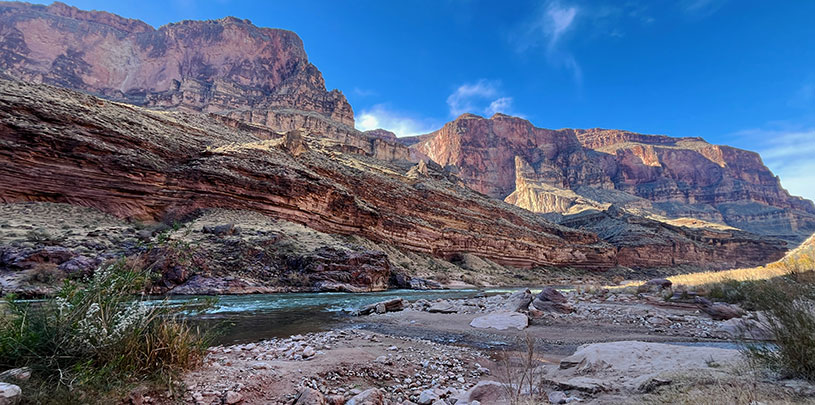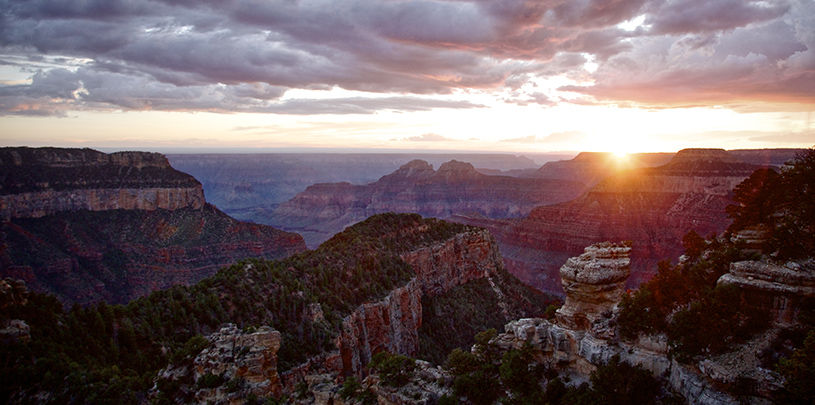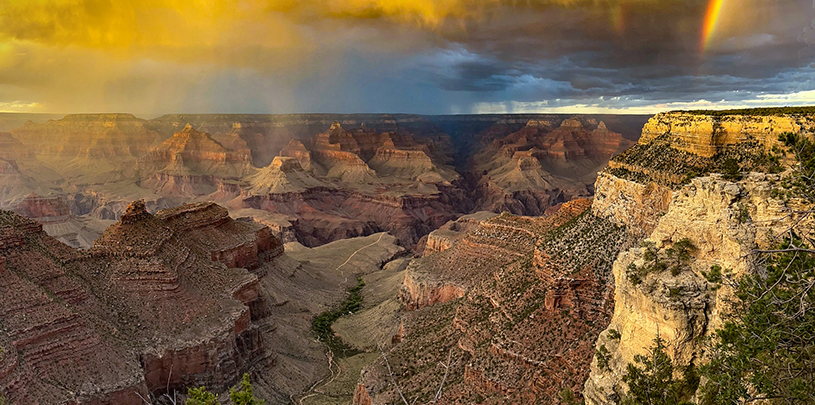
The Havasupai Tribe recently hosted a gathering to oppose uranium mining in and around the Grand Canyon. They hope to halt Canyon Mine, a uranium mine located a few miles from the South Rim that threatens to contaminate their sole source of drinking water, and to protect their sacred homeland from an unconscionable sacrifice.
Tribal council member Coleen Kaska said: “The message that we’re trying to send is listen to us. Hear our voices. Hear the native people’s voices. Hear the Havasupai Tribe. We’re a small tribe but we have a big voice, we have a big area to protect, Grand Canyon area as our sacred religious territory and aboriginal lands. We are still here and wanting to protect our Mother Earth.”
In late June, a group of cultural leaders and young Havasupai men left their home in the bottom of the Grand Canyon to prepare a sweat lodge and ceremonial grounds on the western slope of Red Butte. The U.S. Forest service issued them a permit to use the national forest that now occupies their aboriginal land. Havasupai elders, grandchildren, and families arrived two days later — the first day of summer — and were soon joined by hundreds of relatives from neighboring tribes and native communities from as far away as Mexico and Canada.
Ceremony
For four consecutive days, singers rose before dawn to fill the basin beneath Red Butte with heart-pounding drum beats and prayerful songs.
Runners gathered under a still starlit sky to sprinkle water from their spring-fed Havasu Creek on top of Red Butte at sunrise. Many others gathered at the fire circle to pray and be smudged by smoldering sage before walking 3.6 miles in peaceful protest along the gravel road, which dead ends at Canyon Mine’s security gate. Tarp-covered ore trucks may soon be hauling uranium from the mine through several native communities to the White Mesa Mill in southeast Utah.
Speakers, singers, and dancers filled afternoons and evenings under the cover of a 6,000-square-foot tent. Elders led round dances and shared stories about their long battle to stop uranium mining. Tribal members took turns at the sweat lodge and tending the ceremonial fire at the center of the prayer circle.
Political and cultural leaders from many neighboring nations testified of their resolve to end uranium’s deadly legacy and spoke of their commitment to restore harmony to the land.
“The Havasupai are resilient people,” wrote Havasupai Tribal Council member Carletta Tilousi in an editorial. “We have resided in and around the Grand Canyon for many centuries. This struggle is not about money to us, it is about human life.”
Red Butte and persistence
Red Butte is a resistant stack of silty sandstone that stands prominently near Grand Canyon National Park’s busiest point of entry. While geologists date its deposition to the age of the dinosaurs, the Havasupai believe it to be the lungs of a living landscape, a place that is connected to the sky by surrounding peaks and to the sea by its scarce and sacred waters.
Early residents in the region placed stones pointing to where the sun sets on the summer solstice, and when followed in the opposite direction, to where the sun rises on the winter solstice. Precise tracking of changing seasons aided in gathering and growing enough food and securing sufficient water to survive in this drought-prone region, where people have been praying and persisting for millennia.
The prayer gathering coincided with this year’s summer solstice. It began during a prolonged period of cloudless skies and excessive heat warnings. Officials from the Kaibab National Forest had put fire bans in place, but they made an exception for the tribe’s ceremonial use of fire.
On the final afternoon, a soaking rain swept across the parched land and released the bittersweet scent of sage. Gathering members took this to mean that their prayers had been heard. Convinced of the power of ceremony on hallowed ground, Havasupai leaders are already planning for their next gathering at Red Butte.





